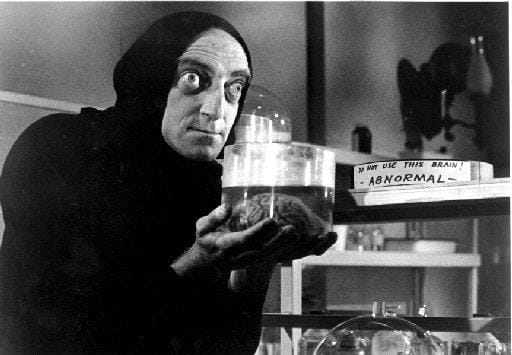Young Frankenstein
Young Frankenstein: Gothic comic
Since we’ve been enjoying the spooky season, I felt it would be a missed opportunity not to post about a spooky film at some point. (Please forgive the hiatus on blogs recently, life has been hellishly busy.)
Mary Shelley’s Frankenstein is one of my favourite novels ever, and is also helpfully a quintessential example of Gothic horror. It doesn’t just contain all the hallmarks of a great Gothic story, it originated many of them: a dark, stormy night in autumn, mad scientists, communes with dead bodies, messing about with the natural world, the horrifying prospect of having our morality questioned, all the usual stuff. Don't take that as discounting all of the very serious and necessary questions which Frankenstein asks us to think about, just as acknowledgment that it makes iconic the Gothic genre and its aesthetic of the strange, the terrifying and the macabre.
So what happens when we make it a comedy? Mel Brooks’ Young Frankenstein takes Shelley’s story and the Gothic aesthetic and combines them with comedy to create a film which is bizarre and often ridiculous, but not stupid by any means. Part of the reason why I reckon comedy and horror go so well together is because they’re so opposite but they both have the aim of generating strong emotional responses from us, it just happens that one wants us to laugh and the other wants us to be terrified. But even then, it’s not always that simple. Something can be terrifying because we find it funny in the same way that something that appears hilarious can actually be terrifying if we think about it too hard.
Also, the fact that Shelley’s novel can be translated across genres so successfully has to be evidence of the power of her writing. Frankenstein is iconic, and I mean that with the full force of the word, not just for the memes. It can be stripped down to its most basic components and still be recognisable, whether you’ve read the original or not. (Frankenstein also has a really interesting publication history of its own but that’s another story entirely.) It’s a story which has clearly inspired countless generations of creative minds to produce stories which, though they reuse old material, are still fresh and evocative and entertaining to us. Young Frankenstein takes Shelley’s characters and premise and is utterly irreverent in its adaptation, but it’s hilarious because it takes something very serious and sees the possibilities for play and experimentation and ridiculousness. Frankenstein is a classic Gothic horror but that doesn’t mean it has to be shoehorned into a particular genre and aesthetic.
It’s clear that Frankenstein is very much alive and kicking (pardon the pun) and whilst we might still have questions about how much you can change the source material before it is no longer recognisable, what we do know is that adaptation is all about making something new. Bringing Frankenstein to new or different audiences to those who might naturally gravitate towards Gothic literature can only broaden our horizons and expand our understanding of the story. And what is learning and growing if not experiment upon experiment?



Comments
Post a Comment